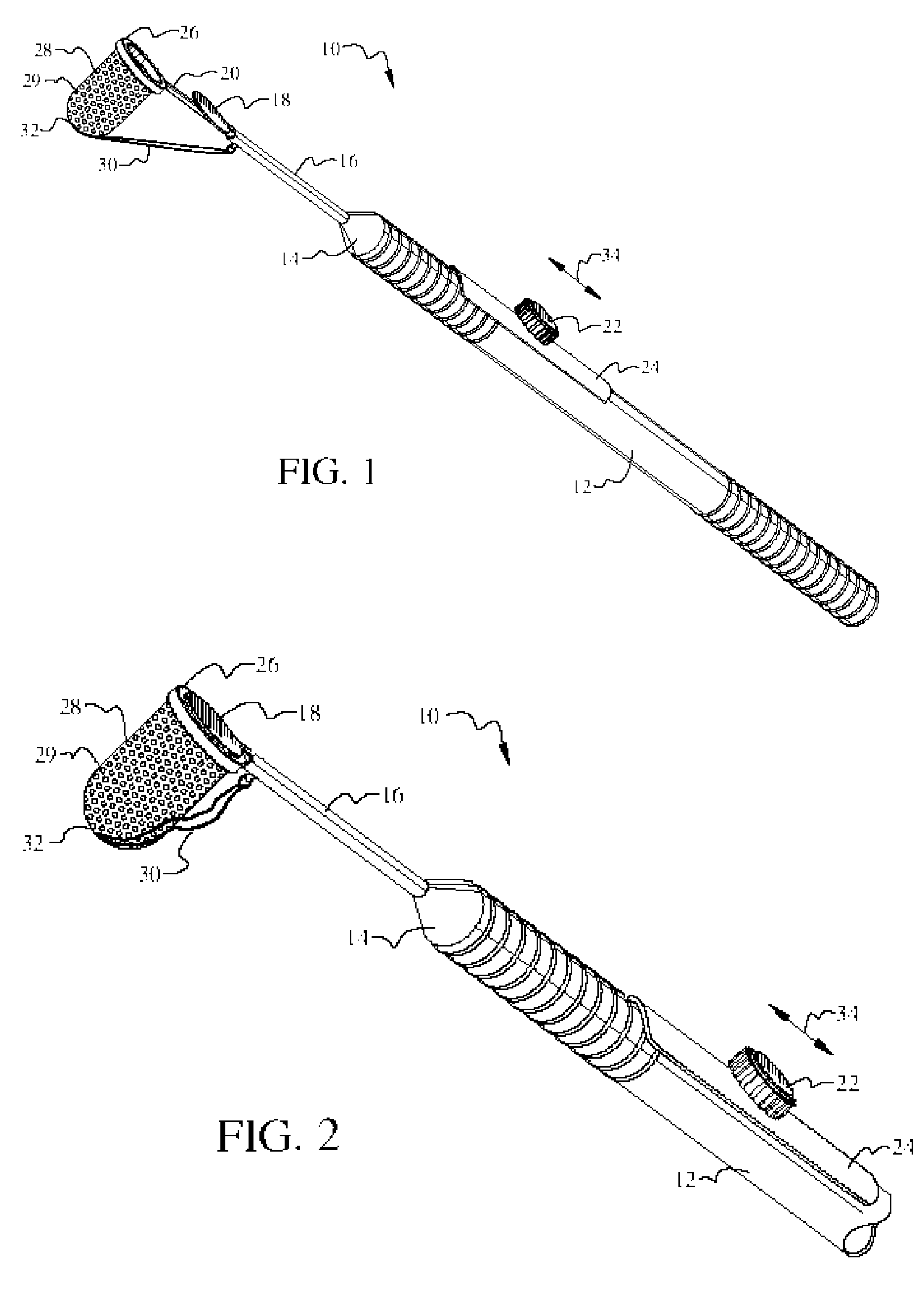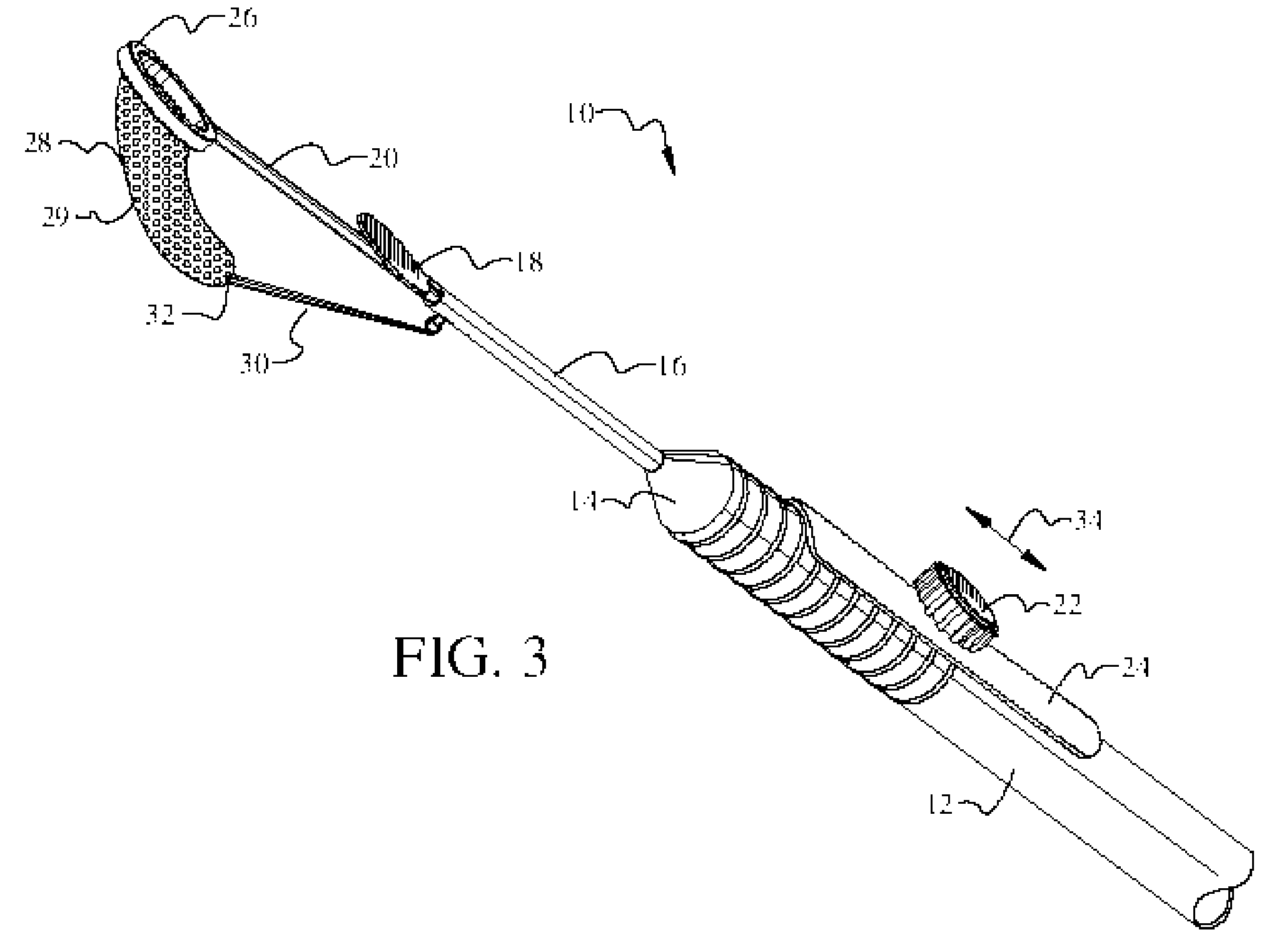Tool for removing intraocular foreign bodies
a technology for removing foreign objects and tools, applied in the field of surgical tools, can solve the problems of limited forceps, difficult to capture irregular shapes of objects using forceps-type tools, and small bite size to remove relatively large foreign objects, etc., and achieve the effect of low friction coefficien
- Summary
- Abstract
- Description
- Claims
- Application Information
AI Technical Summary
Benefits of technology
Problems solved by technology
Method used
Image
Examples
Embodiment Construction
[0028]Referring now to FIGS. 1-3, it will there be seen that an illustrative embodiment of the invention is denoted as a whole by the reference numeral 10.
[0029]Novel intraocular foreign body extractor 10 includes elongate base 12 that is sized for comfortable holding in a human hand. Base 12 is cylindrical along its extent but its leading 14 is frusto-conical in configuration, i.e., said leading end tapers downwardly in diameter from the diameter of the cylindrical base to the diameter of hollow rod 16.
[0030]A flat, circular, basket closure means or lid 18 is formed integrally with hollow rod 16 at the distal free end thereof. Rod 16 and hence lid 18 have a fixed position and are not movable relative to base 12.
[0031]Hollow rod 16 has a lumen that slideably receives elongate control rod 20 therein. The proximal end of elongate control rod 20 is disposed within the interior of base 12 and is mechanically connected by any suitable means to control knob 22. An elongate slot formed in ...
PUM
 Login to View More
Login to View More Abstract
Description
Claims
Application Information
 Login to View More
Login to View More - R&D
- Intellectual Property
- Life Sciences
- Materials
- Tech Scout
- Unparalleled Data Quality
- Higher Quality Content
- 60% Fewer Hallucinations
Browse by: Latest US Patents, China's latest patents, Technical Efficacy Thesaurus, Application Domain, Technology Topic, Popular Technical Reports.
© 2025 PatSnap. All rights reserved.Legal|Privacy policy|Modern Slavery Act Transparency Statement|Sitemap|About US| Contact US: help@patsnap.com



